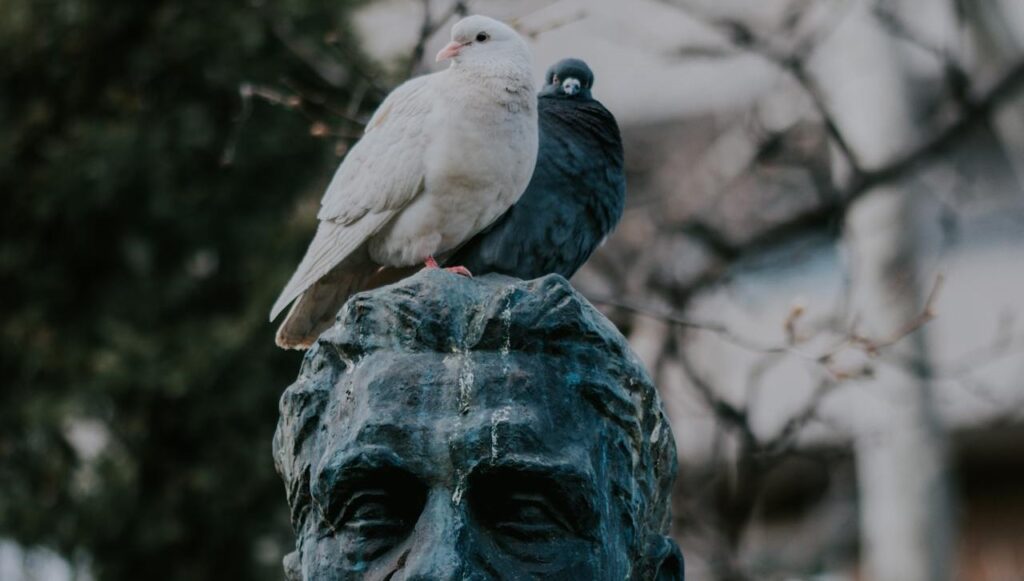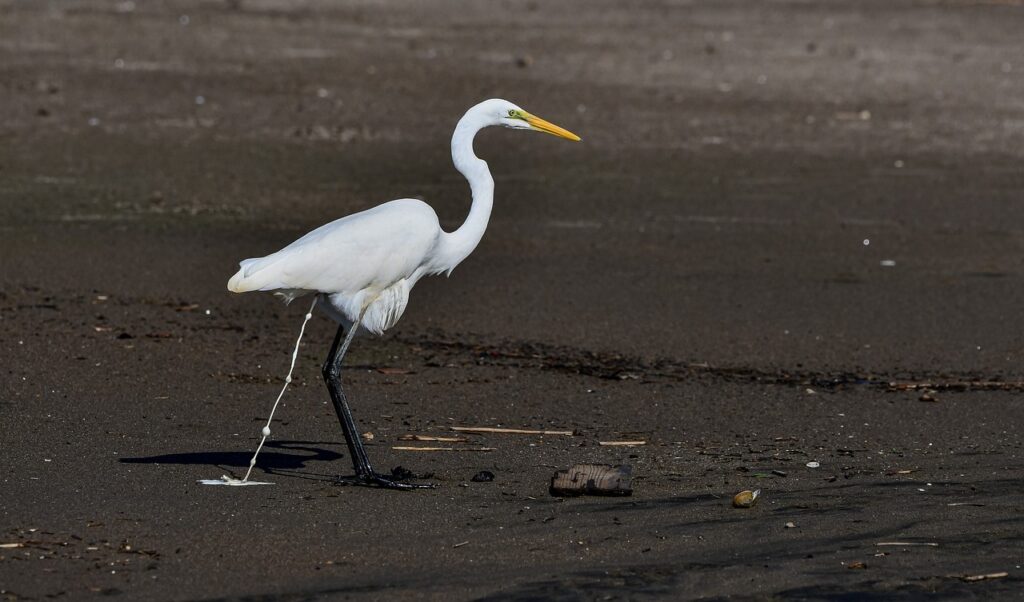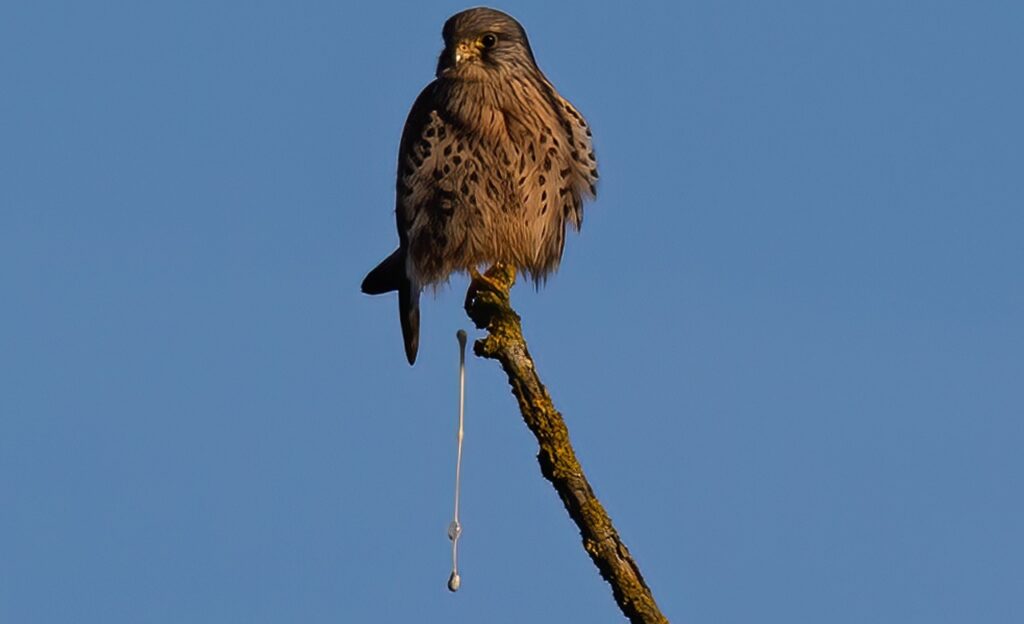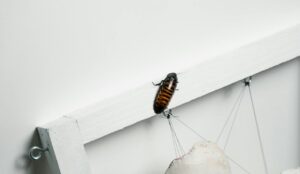Why Are Birds’ Poop White? The Science Behind Bird Droppings
Bird poop is a common sight, splattered on sidewalks, cars, and buildings. One of the most intriguing features of bird poop is its white color. Most people wonder why bird poop is white, while other animals’ waste is usually brown or green. The answer lies in the fact that birds, unlike mammals, don’t produce urine. Instead, they excrete nitrogenous wastes in the form of uric acid, which emerges as a white paste.

Uric acid is a byproduct of protein metabolism, and it is highly concentrated in birds. Birds have a unique excretory system that allows them to conserve water. Unlike mammals, birds excrete nitrogenous waste in solid form, which minimizes water loss. The white color of bird poop is due to the presence of uric acid, which is insoluble in water and forms a white paste.
The consistency of bird poop is also unique. Unlike other animals, birds excrete their waste in one go, combining both solid and liquid waste. This means that the white uric acid paste mixes with the brown or green fecal matter, resulting in the familiar splatter pattern seen on cars and buildings. Understanding why bird poop is white can help us appreciate the unique adaptations of birds and their importance in our ecosystem.
Bird Digestive System
Birds have a unique digestive system that enables them to extract nutrients from the foods they eat. The digestive system of birds is divided into two parts: the upper digestive tract and the lower digestive tract. The upper digestive tract consists of the mouth, esophagus, crop, and proventriculus. The lower digestive tract consists of the gizzard, small intestine, ceca, and cloaca.
Anatomy of the Avian Digestive Tract
The anatomy of the avian digestive tract is adapted to the unique diet of birds. Birds lack teeth and instead have a muscular organ called the gizzard that grinds food. The crop is a sac-like structure that stores food before it enters the stomach. The proventriculus is the glandular stomach that secretes digestive enzymes. The small intestine is where most nutrients are absorbed, and the ceca are blind pouches that contain microorganisms that help break down cellulose.
Digestive Process in Birds
The digestive process in birds begins in the mouth, where food is moistened and mixed with saliva. The food then passes through the esophagus and enters the crop, where it is stored and softened. From the crop, the food passes into the proventriculus, where it is mixed with digestive enzymes. The food then enters the gizzard, where it is ground up by muscular contractions and mixed with small stones or grit that help break down the food. The food then passes into the small intestine, where most nutrients are absorbed. The ceca contain microorganisms that help break down cellulose, which is a component of plant cell walls that is difficult to digest.
Overall, the unique digestive system of birds enables them to extract nutrients from a wide range of foods, including seeds, fruits, insects, and small animals. The uric acid produced during the digestive process is excreted as a white paste, which is why bird poop is white.

Excretion in Birds
Birds have a unique excretory system that differs from mammals. Instead of separate organs for urination and defecation, birds have a single opening called the cloaca. The cloaca serves as an entrance for reproductive purposes, for laying eggs, and as an exit point for excretion of bodily waste.
Role of the Kidneys
Birds have two kidneys that play a crucial role in waste removal. The kidneys filter waste from the bloodstream and remove excess water and salts. Unlike mammals, birds do not excrete the products of protein breakdown as soluble urea, but as uric acid.
Uric Acid and Waste Removal
Uric acid is a white, sticky paste that is excreted through the cloaca. The white color of bird poop is predominantly due to the presence of uric acid. This is in contrast to mammals, which excrete nitrogenous waste mostly in the form of urea.
The unique excretory system of birds allows them to conserve water efficiently. Uric acid requires less water to be excreted from the body compared to urea. This is important for birds, especially those that live in arid environments where water is scarce.
Overall, the excretory system of birds is adapted to their unique lifestyle and environment. The use of uric acid as a waste product allows for efficient water conservation, while the cloaca serves as a multipurpose opening for excretion and reproduction.
Why Bird Poop Is White
Bird poop is a common sight on cars, buildings, and sidewalks. Have you ever wondered why it’s white? Unlike mammals, birds don’t produce urine. Instead, they excrete nitrogenous waste in the form of uric acid, which emerges as a white paste.
Uric Acid Properties
Uric acid has unique properties that make it well-suited for bird excretion. It is a highly concentrated compound that contains very little water. This allows birds to conserve water, which is essential for their survival, especially in arid environments.
Uric acid is also less toxic than other nitrogenous waste products, such as urea. This is because it is insoluble in water and can be safely stored in the bird’s cloaca until it is excreted. Urea, on the other hand, is highly soluble in water and can be toxic to birds if it accumulates in their tissues.
Adaptations for Flight
Birds have evolved a number of adaptations that make them well-suited for flight, including lightweight bones, powerful muscles, and efficient respiratory systems. These adaptations also extend to their excretory system.
Because birds need to be as lightweight as possible to fly, they have evolved a highly efficient excretory system that produces uric acid instead of urea. Uric acid is much less bulky than urea, which means that birds can excrete waste without adding unnecessary weight to their bodies.
In conclusion, birds excrete white poop because they produce uric acid instead of urea like mammals. Uric acid is highly concentrated, contains very little water, and is less toxic than other nitrogenous waste products. This makes it well-suited for bird excretion and allows them to conserve water and stay lightweight for flight.

Impact on Humans and Environment
Bird Poop in Ecosystems
Bird poop, also known as guano, has a significant impact on ecosystems. It is a natural fertilizer that provides essential nutrients to plants and helps support the growth of vegetation. In areas where bird populations are high, guano can accumulate in large quantities, leading to the formation of nutrient-rich soil that supports a diverse range of plant species.
However, in areas where bird populations are low, the lack of guano can lead to a decrease in plant growth and biodiversity. This can have a ripple effect on the entire ecosystem, impacting both plant and animal populations.
Cleaning and Maintenance Issues
While bird poop can have positive effects on ecosystems, it can also be a nuisance for humans. When birds roost in urban areas, their droppings can accumulate on sidewalks, buildings, and cars, causing unsightly stains and unpleasant odors. In addition, bird poop can be a health hazard, as it can contain harmful bacteria and parasites that can be transmitted to humans.
Cleaning up bird poop can be a time-consuming and costly task, particularly in areas with high bird populations. Regular maintenance and cleaning are necessary to prevent the buildup of guano and maintain a clean and healthy environment.
In conclusion, while bird poop can have positive effects on ecosystems, it can also be a nuisance for humans. Proper cleaning and maintenance are necessary to prevent the buildup of guano and maintain a clean and healthy environment.
Frequently Asked Questions
Health Risks Associated with Bird Poop
Bird poop may contain harmful bacteria, such as E. coli and Salmonella, which can cause illnesses in humans. These bacteria can be present in bird droppings and can be transmitted through contact with contaminated surfaces or inhalation of dust particles containing bird droppings. People who work with birds or in areas where there are large numbers of birds should take precautions to avoid exposure to bird droppings. These precautions may include wearing protective clothing and masks, washing hands frequently, and avoiding touching the face or mouth.
Differences Between Bird and Mammal Excretion
Birds and mammals have different ways of excreting waste. Unlike mammals, birds do not produce urine. Instead, they excrete nitrogenous waste in the form of uric acid, which emerges as a white paste. Uric acid does not dissolve in water easily, which is why bird poop is white and can stick to surfaces. In contrast, mammals excrete nitrogenous waste in the form of urea, which is dissolved in water and excreted as urine.
Birds also have a cloaca, which is a single opening that is used for excretion, mating, and laying eggs. Mammals, on the other hand, have separate openings for excretion, mating, and giving birth. This difference in anatomy is due to the fact that birds evolved from reptiles, which also have a cloaca.




